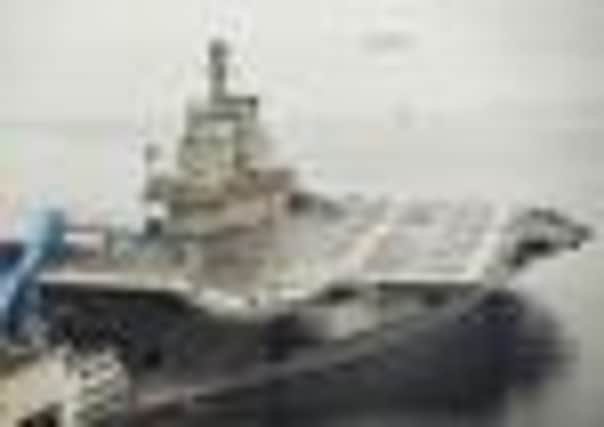First aircraft carrier marks new dawn for Chinese navy


Its defence ministry said the commissioning boosted combat capabilities and China’s ability to react to natural disasters and other threats.
Beijing is currently involved in a dispute with Japan over a group of uninhabited islands in the East China Sea, but the aircraft carrier announcement was not being seen as directly related to this.
Advertisement
Hide AdAdvertisement
Hide Ad“It has important significance in effectively safeguarding national sovereignty, security, and development benefits, and advancing world peace and common development,” the ministry statement said.
China had partly justified the launching of a carrier by pointing out that it alone among the five permanent United Nations Security Council members had no such vessels. That had been particularly glaring given the constant presence in Asia of carriers operated by the US navy, which maintains 11 worldwide.
President Hu Jintao, also chairman of the commission that controls the military, presided over a ceremony yesterday morning at the ship’s home port of Dalian, along with premier Wen Jiabao and senior generals.
Mr Wen said the carrier would “arouse national pride and patriotic passion”. He added: “This has mighty and deep significance for the opening of a new facet in our enterprise of socialism with Chinese characteristics.”
The carrier is the former Soviet navy’s unfinished Varyag, which was towed from Ukraine in 1998 minus its engines, weapons and navigation systems. Christened the Liaoning after the north-eastern province surrounding Dalian, the ship, which displaces 66,400 tons fully laden, began sea trials in August 2011 following years of refurbishment.
So far its trial runs have been to test the ship’s propulsion, communications and navigation systems. But launching and recovering fixed-wing aircraft at sea is a much trickier proposition. It will take years to build suitable aircraft, to train pilots to land in adverse weather on a moving deck, and to develop a proper carrier battle group.
China is developing a carrier-based fighter-bomber, the J-15, derived from Russia’s Sukhoi Su-33, along with a prototype stealth carrier fighter, the J-31.
Beijing hasn’t said what role it intends the carrier to fill other than helping safeguard China’s coastline and sea links.
Advertisement
Hide AdAdvertisement
Hide AdThe Liaoning has also been portrayed as a test platform for the future development of up to five domestically built Chinese carriers.
Writing in the China Daily newspaper yesterday, retired rear admiral Yang Yi said Beijing wouldn’t shy away from flexing its muscles.
He wrote: “When China has a more balanced and powerful navy, the regional situation will be more stable as various forces that threaten regional peace will no longer dare to act rashly.”
Whatever its practical effects on China’s global status, the carrier has huge symbolic power for Beijing, according to Andrew Erickson, a China naval specialist at the US Naval War College.
“While the Chinese navy’s acceptance of this ‘starter carrier’ is the first step in a long journey, it is a journey that will take place in full view of the world, and one that will ultimately take Beijing to a new place as a great sea power,” Mr Erickson said.